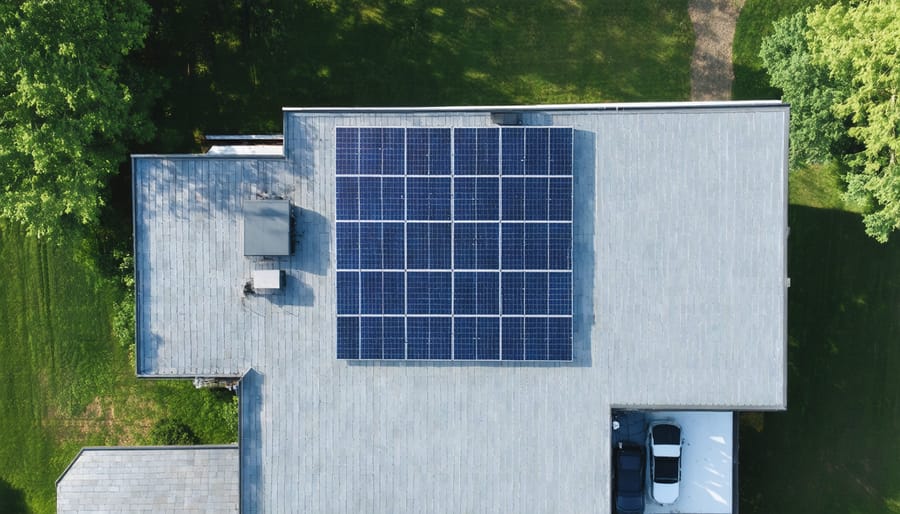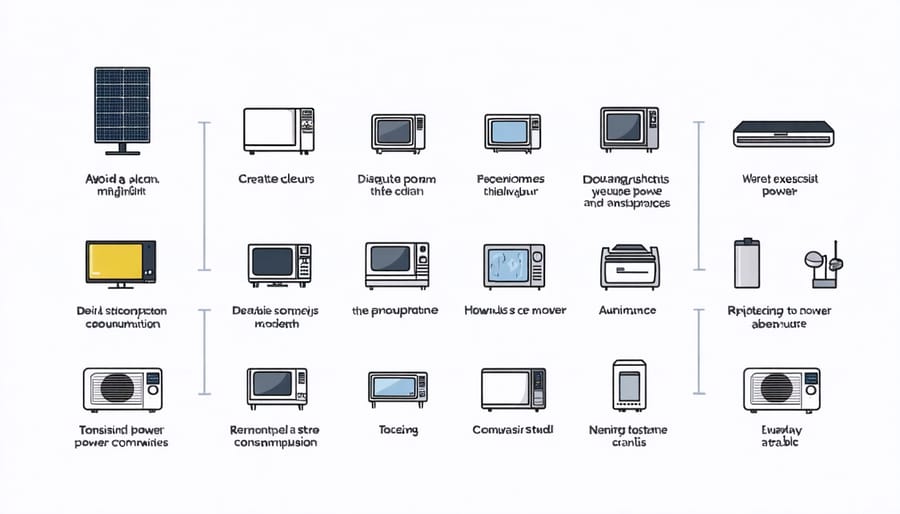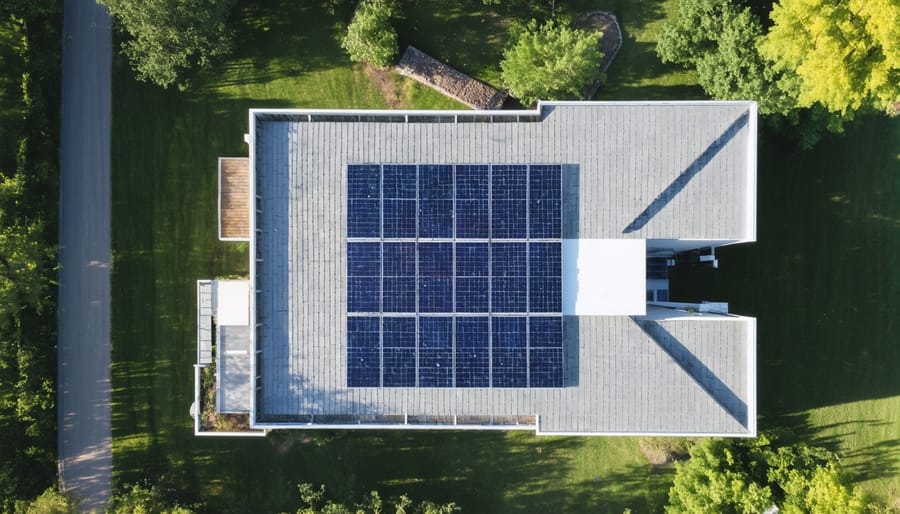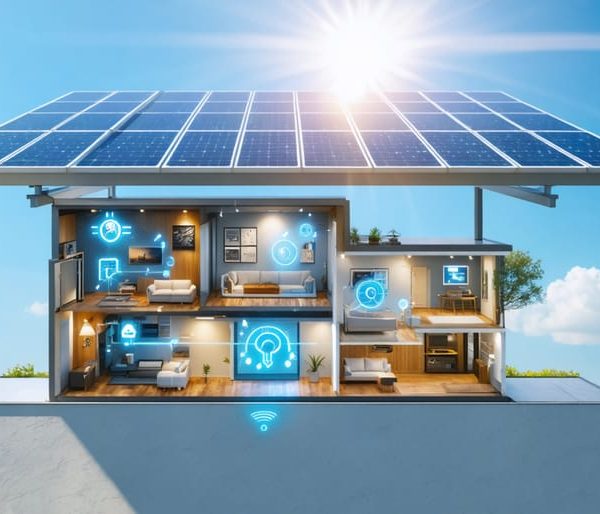Power Your Entire Home: What a 9000W Solar System Can Really Run
Power your home sustainably with a 9000-watt solar system, a robust solution capable of running multiple high-demand appliances simultaneously while significantly reducing your carbon footprint. When choosing the right solar system size, this configuration delivers enough energy to power essential household needs, including air conditioning, refrigeration, and electric water heating, while providing surplus power for additional devices.
A 9000W system typically generates 36-45 kWh of electricity daily under optimal conditions, making it ideal for medium to large households consuming 1000-1200 kWh monthly. This system size strikes the perfect balance between investment and energy independence, offering substantial utility bill savings while providing a reliable power source during daylight hours.
With modern solar technology advancing rapidly, these systems now feature enhanced efficiency, sophisticated power management, and smart monitoring capabilities. Whether you’re environmentally conscious or seeking long-term energy cost reduction, a 9000-watt solar installation represents a strategic investment in your home’s sustainable future.
Understanding Your 9000W Solar System
Key Components
A 9000-watt solar system typically requires 24-30 solar panels, depending on each panel’s wattage rating. Most residential installations use 370-400 watt panels, meaning you’ll need approximately 25 panels to achieve the desired output. These panels should be high-efficiency monocrystalline modules for optimal performance and space utilization.
The system needs a robust inverter setup to convert DC power from your panels into usable AC power. For a 9000-watt system, you’ll want to install a 9kW inverter or multiple smaller string inverters that add up to your desired capacity. Many homeowners opt for hybrid inverters, which can work with both solar panels and battery storage.
For backup power, consider installing a battery bank with at least 20kWh capacity. This typically means four lithium-ion batteries rated at 5kWh each. Modern lithium phosphate batteries are recommended for their longer lifespan and better safety features.
Additional components include:
– Mounting hardware and racking system
– DC and AC disconnects
– System monitoring equipment
– Surge protection devices
– Solar cables and connectors
– Grounding equipment
Installation Requirements
A 9000-watt solar system typically requires 450-600 square feet of unobstructed roof space, depending on the panels’ efficiency and layout. Before beginning the solar system installation process, ensure your roof can support approximately 900-1,200 pounds of additional weight. Most modern homes are built to handle this load, but older structures may need reinforcement.
The ideal installation location should face south in the Northern Hemisphere, with a roof pitch between 30-45 degrees. Trees, chimneys, or nearby buildings shouldn’t cast shadows on the panels during peak sunlight hours. You’ll also need adequate space for mounting hardware, wiring conduits, and safety equipment.
Indoor requirements include a cool, dry area for the inverter installation, typically in your garage or utility room. Plan for approximately 4 square feet of wall space for the inverter and electrical components. Your main electrical panel should have sufficient capacity to accommodate the solar system’s output, and you may need to upgrade your existing electrical service panel if it’s older or undersized.

Appliance Power Coverage

Essential Appliances
A 9000-watt solar system can power most essential solar-compatible home appliances simultaneously, making it an excellent choice for average-sized households. This system can easily handle your refrigerator (500-750 watts), washing machine (500-900 watts), dishwasher (1200-1500 watts), and multiple LED lights (10-15 watts each) without strain.
You can confidently run your air conditioning unit (1000-1500 watts) while using other appliances, though it’s wise to monitor usage during peak cooling hours. Kitchen appliances like microwaves (600-1200 watts), electric kettles (1200-1500 watts), and toasters (800-1500 watts) can operate simultaneously with proper load management.
For entertainment and home office needs, your system will easily power multiple devices including TVs (100-400 watts), computers (200-400 watts), and gaming consoles (150-300 watts). Smart home devices and security systems, which typically use minimal power, can run continuously without concern.
To maximize efficiency, consider using energy-star rated appliances and implementing simple energy-saving practices like running major appliances during peak sunlight hours. This approach ensures you get the most from your solar investment while maintaining comfortable modern living standards.
High-Power Devices
A 9000-watt solar system can handle several high-power devices simultaneously, making it suitable for modern homes with multiple energy-intensive appliances. Let’s look at what you can power with this setup.
Your system can easily run large appliances like electric ovens (2000-5000 watts), clothes dryers (3000-4000 watts), and central air conditioning units (3500-5000 watts). During peak sunlight hours, you could potentially run these major appliances together, though it’s wise to stagger their use for optimal performance.
In the kitchen, you can confidently operate energy-hungry appliances like refrigerators (150-400 watts), dishwashers (1200-2400 watts), and microwaves (600-1200 watts). For home comfort, electric water heaters (4000-4500 watts) work well within this system’s capacity.
Keep in mind that these devices rarely run at maximum power continuously. For example, air conditioners cycle on and off, and refrigerators operate intermittently. This cycling nature means your 9000-watt system can effectively manage more devices than you might expect.
To maximize your system’s efficiency, consider using major appliances during peak sunlight hours (typically 10 AM to 4 PM). This practice ensures you’re using solar power directly rather than drawing from battery storage, which is especially important if you have a grid-tied system without battery backup.
Remember to factor in some power reserve for smaller devices like laptops, TVs, and lighting, which might be running simultaneously with your larger appliances.
Simultaneous Usage Capabilities
A 9000-watt solar system offers impressive simultaneous usage capabilities, allowing you to power multiple appliances and devices concurrently. During peak sunlight hours, you can confidently run your essential household equipment without worry about power limitations.
For example, you can simultaneously operate an air conditioner (3000W), refrigerator (700W), washing machine (500W), and several lights (300W total), while still having enough capacity to power your entertainment systems and charge mobile devices. In a typical household setup, this might look like:
Morning Usage:
– Electric kettle + toaster + refrigerator + lights
– Coffee maker + microwave + home office equipment
Afternoon Peak:
– Air conditioning + washing machine + TV
– Electric oven + dishwasher + multiple room fans
Evening Configuration:
– Kitchen appliances + entertainment system + lighting
– Hot water system + security systems + charging devices
Keep in mind that actual simultaneous usage depends on your battery storage capacity if you’re planning to use the system after sunset. For optimal performance, try to schedule energy-intensive activities like laundry or running the dishwasher during peak sunlight hours. This strategy helps maximize your system’s efficiency and ensures you’re making the most of your solar investment.
Remember to consider seasonal variations in solar production when planning your appliance usage patterns. Winter months may require more strategic planning of simultaneous appliance use compared to summer months with longer daylight hours.
Cost and Energy Savings
Initial Investment
A 9000-watt solar system represents a significant investment in your home’s energy future. The total cost typically ranges from $18,000 to $27,000 before any incentives or tax credits. This price breakdown includes several key components:
Solar panels make up about 40% of the total cost, ranging from $7,200 to $10,800 for high-quality panels. The inverter system, essential for converting DC power to usable AC power, accounts for approximately 20% of the budget, typically costing between $3,600 and $5,400.
Installation labor and mounting hardware constitute about 25% of the total investment, usually between $4,500 and $6,750. The remaining 15% covers permits, inspection fees, and electrical system upgrades, averaging $2,700 to $4,050.
However, the actual out-of-pocket cost can be significantly lower thanks to various incentives. The federal solar tax credit currently offers a 30% reduction in your total system cost. Additional state and local incentives, utility company rebates, and solar renewable energy certificates (SRECs) can further reduce your initial investment by 10-20%.
When considering financing options, many homeowners opt for solar loans with terms ranging from 5 to 20 years. With current interest rates, monthly payments often align with or fall below existing electricity bills, making the transition to solar power financially accessible for many households.
Long-term Benefits
Installing a 9000-watt solar system offers substantial long-term financial and environmental benefits that make it a smart investment for your property. Over time, you can significantly reduce your energy bills, with many homeowners reporting savings of 60-90% on their monthly electricity costs.
The average payback period for a 9000-watt system typically ranges from 5 to 8 years, depending on your location, energy consumption patterns, and local electricity rates. After this period, you’ll essentially be generating free electricity for the remaining lifetime of your system, which usually extends beyond 25 years.
Beyond immediate cost savings, your property value could increase by 3-4% with a solar installation of this size. Many homebuyers are willing to pay a premium for homes with existing solar systems, making it a valuable long-term investment in your property.
Environmental benefits are equally impressive, with a 9000-watt system potentially offsetting about 9 metric tons of carbon dioxide emissions annually – equivalent to planting over 150 trees each year. This contribution to environmental sustainability continues throughout the system’s lifetime, creating a lasting positive impact on our planet.
Additionally, many regions offer ongoing incentives like net metering and renewable energy credits, providing extra income streams that can further enhance your return on investment.

Real User Experiences
Meet Sarah and Tom Wilson from Arizona, who installed their 9000W solar system two years ago. “Our monthly electricity bills used to be over $300 during peak summer months. After installing our system, we’re now saving around $250 monthly, and our home stays comfortable even during the hottest days,” Sarah shares. Their system powers their entire 2,400-square-foot home, including two air conditioning units and a pool pump.
In Colorado, the Martinez family’s experience showcases the system’s winter performance. “We were initially concerned about snow coverage affecting production, but our panels have exceeded expectations,” explains Carlos Martinez. “Even on cloudy winter days, we generate enough power to run our home office equipment, heating system, and regular appliances.”
Business owner Linda Chen installed a 9000W system at her small retail store in California. “The system covers about 85% of our energy needs, including lighting, refrigeration, and air conditioning. The installation paid for itself in just over four years through reduced utility bills and tax incentives,” she reports.
For the Jackson family in Texas, their system’s performance during grid outages has been invaluable. “During the 2021 winter storm, our battery backup system kept essential appliances running while our neighbors were without power,” says Mike Jackson. “We could run our refrigerator, heating system, and even help neighbors charge their phones.”
The Patels in Florida highlight the system’s monitoring capabilities: “Through our smartphone app, we can track our energy production and consumption in real-time. It’s fascinating to see how weather patterns affect our generation and adjust our usage accordingly,” shares Priya Patel. Their system produces an average of 36-40 kWh on sunny days, easily meeting their family’s daily needs of around 30 kWh.
These real-world experiences demonstrate how a 9000W solar system can adapt to different climates, usage patterns, and energy needs while delivering significant cost savings and energy independence.
A 9000-watt solar system represents a significant step toward energy independence and environmental responsibility. As we’ve explored throughout this guide, this powerful setup offers the perfect balance of capacity and efficiency for many homeowners and small businesses. With the ability to power multiple appliances simultaneously and potentially eliminate your electricity bill, the investment in a 9000-watt system can pay dividends both financially and environmentally.
Remember that proper planning is crucial for success. From assessing your energy needs to choosing quality components and working with certified installers, each decision contributes to the overall performance of your system. While the initial investment may seem substantial, the long-term benefits – including reduced energy costs, increased property value, and a smaller carbon footprint – make it a worthwhile consideration.
Many homeowners who have made the switch report satisfaction not just with their energy savings, but with the peace of mind that comes from energy independence. As solar technology continues to advance and prices become more competitive, there’s never been a better time to embrace solar power.
Whether you’re motivated by environmental concerns, seeking energy independence, or looking to reduce utility costs, a 9000-watt solar system could be your gateway to a more sustainable future. Take the first step today by consulting with solar professionals and joining the growing community of homeowners powering their lives with clean, renewable energy.











